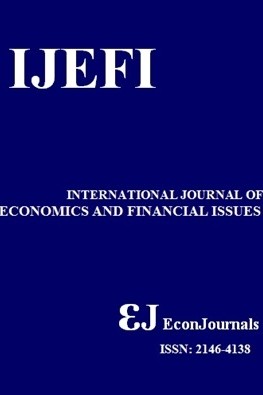Separating and Merging Cash Flows: Investigating Five-element Cash Flows Statement
Separating and Merging Cash Flows: Investigating Five-element Cash Flows Statement
- Başlangıç: 2011
- Yayıncı: İlhan ÖZTÜRK
Financial Literacy and Risk Tolerance towards Saving and Investment: A Case Study in Malaysia
Zukarnain ZAKARİA, Siti Maisarah Mohamad NOR, Mohd Roslan ISMAİL
Lya Paola SİERRA, Luis Eduardo GİRÓN, Carolina OSORİO
Mapping of Featured Micro-small-medium Enterprises in Buleleng Regency, Bali, Indonesia
Made ANTARA, Made Sri SUMARNİASİH
Analyze the Determinants of Capital Structure for Vietnamese Real Estate Listed Companies
Nhung Thi Phuong Nguyen, Lien Phuong Nguyen, Hang Thi Thu Dang
Talla M ALDEEHANİ, Amani Kh. BOURESLİ
Correlation between Office Locations, Corporate Governance and Business Performance
Statistical Arbitrage Pairs Trading with High-frequency Data
Johannes Stübinger, Jens Bredthauer
Demographic and Competitiveness Acceleration and Government Sustainable Advantage in Indonesia
